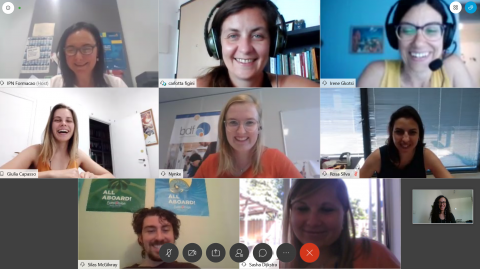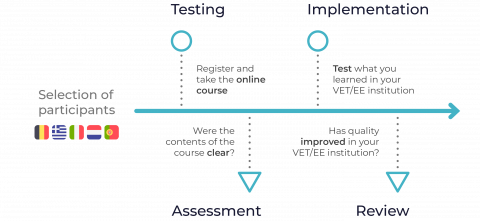4.5 - Data Collection
Abstract
As a Quality Manager you should consider the importance of data collection. Data collection is the
systematic process of gathering data for official statistics and it is a process of reviewing, studying,
examining, and questioning the data in order to find patterns, anomalies and trends. The main
purpose of data collection and analysis is to contribute to the improvement of the in-house capacity
to collect data and achieve higher quality information; and in due course achieve better VET learners’
outcomes.
Why is this important for you as a QM?
- to measure outcomes and demonstrate the improvement achieved
- to discuss how data will be collected, which is an important part of the self-monitoring plan
- to be able to identify existing problems and make informed decisions about what to change and how to change it. Once you as a QM make the necessary changes, data will help you evaluate the effect of the change as reflected in the data.
- to reviewing data supports perceptions (e.g. about which learners are learning and attending) but it also reveals the differences.
How should I implement the action?
- Look into what data collection procedures are already in place, either locally or at a regional/ national level in order to adapt it adequately and, by doing so, avoid duplication of efforts;
- Create a data collection plan that answers the questions: why, where, what, who and how, regarding data collection;
- Use standardized definitions of data elements, procedures and collection forms to ensure the uniformity of the data collected regardless of who collects it;
- Ensure quality control of data collection processes by overseeing and fine-tuning them, given that problems and unforeseen issues will inevitably arise;
- Don´t forget to train your staff on such basics as a) when to collect data, b) how to complete forms, c) how to enter data;
- Decide on the best way to collect data, and consider whether to collect quantitative information, qualitative information or both. Quantitative data can be collected using three main types of surveys: censuses, sample surveys, and administrative data. Qualitative data can be gathered in a variety of ways, for example: questionnaires, interviews, focus groups, observation, Ccse studies;
- Analyze the data collected according to these three levels:
- Level 1 gathering of data, i.e. quantitative ( numerical) and qualitative (narrative), which describe “what is” or “what is happening”;
- Level 2: data is turned into information, i.e. it allows providers to make key statements or comparisons;
- Level 3: information is used as evidence to: make judgements, e.g.” how well” or “to what extent”; take decisions, e.g. “if this is so, then we need…”; determine priorities.
- By exploring data, you are able to identify existing problems and make informed decisions about what to change and how to change it. Once you have made the necessary changes, data will help you evaluate the effect of the change as reflected in the data;
- Finally, don´t forget that every VET process improvement effort relies on data to provide a factual basis for making decisions throughout the EQAVET Quality Cycle (Plan, Implement, Evaluate, and Review). In other words, ensure that the data are of high quality so that you and other relevant stakeholders may leverage them with confidence for data-driven decision making.
How should I know if I have made impact thus increasing the quality of the VET provision and to which extent? (Indicators also linked with the EQAVET if any):
- Were you able to create your Data Collection Plan? (yes/no)
- Is the data that you collected useful in making improvements (yes/no)
- Did you rely on the data collected to make decisions? (yes/no)
Links & further readings (includes also third-party resources- videos, etc.):
- Galvão, M. E., VET providers´s self-monitoring by using the EQAVET toolbox of indicators (2017)



